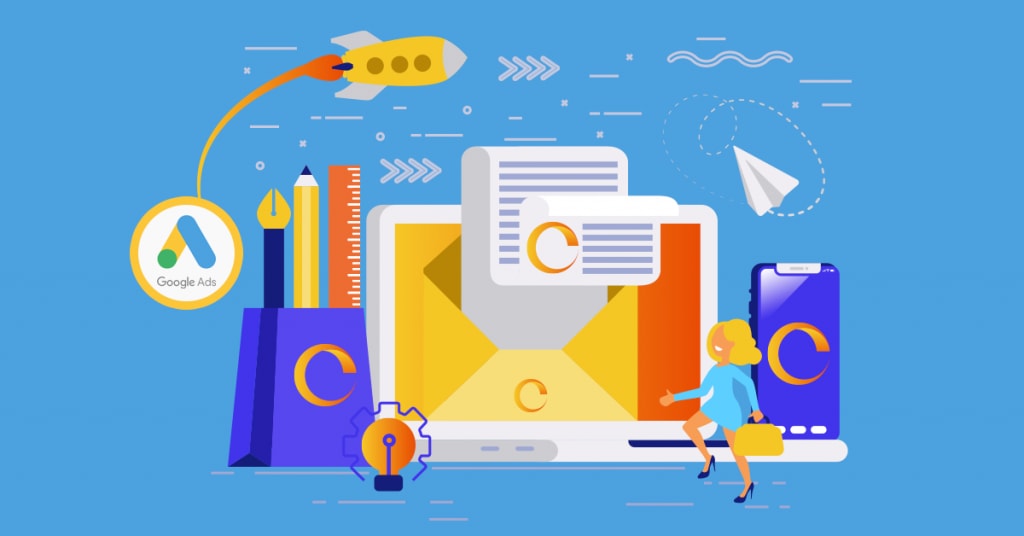Thanks to major technological advancements, digital marketing has rapidly taken over in this modern age — and therefore digital age. Brands of all kinds and levels are now opting into more technological exercise as a means of scaling their businesses.
Google Ads is one of many digital marketing services that offer brands comprehensive and accurate advertising campaigns. It’s managed to stand out as a marketing giant, thanks to the millions of people who use it every day — Google Search.
Here, you’ll learn more about Google Ads and how to set up your account correctly in order to maximise its benefits. It’s no doubt that Google is a top-contender for digital marketing services and using it the right way sets you up for even better results.
Benefits of Google Ads to Digital Marketing
a. Increase Brand Awareness
It’s every brand’s mission to get recognition, especially from the target audience.
This boosts traffic, clicks, which later results in conversions. Google Ads is an efficient and reliable way of telling people about your brand.
The platform offers millions of diverse traffic for your business to benefit from and you can easily set campaigns focusing on your target audience.
b. Works Faster than SEO
It’s no doubt that content marketing is also a lucrative form of getting your business out there.
However, such a strategy requires utmost efforts and consumes more time in general.
Don’t get it twisted, SEO strategy is awesome, but if you want to see a boom in your brand in the shortest time then Google Ads is the preferred strategy.
c. Larger Audience
Google is the leading search engine globally; meaning running an ad campaign with them exposes your brand to millions of users every day.
And from such a pool of traffic, it doesn’t matter if you are an international or local brand.
Google Ads gives you access to a larger audience than any other digital marketing space can offer you.
d. Measurable and Scalable
For any brand, checking on the progress of any ad campaign is a key factor in determining business growth.
And like any other aspect of digital marketing, Google Ads gives you the privilege of monitoring your brand’s ad campaign progress.
e. Reach the Target Audience at the Right Time
When using Google Ads, you can reach your target audience and even better, at a targeted time.
This is possible thanks to the platform’s ad scheduling features that give you the opportunity to set up your campaign based on you and your audience’s availability.
Let’s just say, if you are not available to take calls on Saturday, just pause your ads.
1. Basic Terms used in Google Adwords
Keywords – Keywords are simply the phrases or words that users type when searching for something they want.
Google Ads helps you set up your ad campaign by first asking you to pick certain keywords that you think your target audience might be searching for.
Bid – This is the maximum amount any brand is willing to pay Google once someone clicks their advertisement.
Quality Score – Google uses this metric to inform you of the relevancy of your keywords to your ad campaign, along with your landing page as well.
According to Google, a good Quality Score lowers your bid expenses but improves your ad rank in search results.
Ad Rank – As the name suggests, ad rank is a metric that determines where your ad will be seen, compared to similar campaigns.
It’s determined by your bid and Quality Score, among other factors.
CPC – This is an abbreviation of Cost per Click, which is the actual amount that brands pay to Google once someone clicks on their ads.
Conversion – This is the ultimatum of any digital marketing strategy.
Conversion is when a potential customer clicks on your ad and proceeds to the next step you’ve designed for them.
That is either signing up to a newsletter, complete a survey, totally checkout for product purchase.
2. Organizing Your Account
After learning the above basics, now comes the first step of any Google Ads campaign — organizing your account.
At this point, you’ll start grouping your products or services into various categories, which should be the basis of structuring your account.
We call this the Ad Grouping, meaning all relevance keywords, ads, the landing page will group under a common group and theme.
Here are some examples to elaborate on organising a Google Ads account:
a) If you are running a Dental Clinic
Campaign: – Dental Clinic
Ad Group 1: Dentist
Ad Group 2: Crown
Ad Group 3: Teeth whitening
b) If you are running a Baby Daycare
Campaign: Baby Day Care
Ad Group 1: Day Nursery
Ad Group 2: Childcare
Ad Group 3: Programmes
c) If you are running a Law Firm
Campaign: Law Firm
Ad Group 1: Elder Law
Ad Group 2: Corporate Law
Ad Group 3: Attorney
3. Set up Budget
Setting up your budget requires you to understand the amount you are willing to spend per day. Google Ads allow you to control the amount you spend by using your bids and daily budget.
In the beginning, you can set the overall budget for your ad campaign and then control the budget by maximizing on what’s working best for your brand.
Additionally, staying committed to your budget sets you up the right way for an effective ad campaign, getting the best value for CPC and Conversions.
4. Selecting Keywords
Once you’ve determined the budget you want to work with, selecting your keywords is the next step — the vital step.
At this point, you want to select keywords based on users intent, their search volumes, trend, and relevancy to your business.
Additionally, Google Ads offers a free keyword planner tool that will assist you to adequately plan your selected keywords for optimal results.
5. Defining Keywords Type
Broad Match – This is the default setting for all ad campaigns, and shows your ad in the broadest of searches such as related searches.
Broad Match Modifier – This specifies which broad-match keywords you want to be displayed on the user’s search for your ad to be seen.
Phrase Match – The phrase match puts up your ad on display for searches that contain your exact keywords and any additional words that are before or after your keywords.
Exact Match – Like the name suggests your ad will only be visible to searchers who have only typed your exact match keywords.
Negative Match – This allows you to weed out any irrelevant traffic by excluding unwanted phrases or words that could trigger your ad.
6. Landing Pages
After clicking your ad, your customers arrive on your landing page. This is basically an extension of your website and it should be user-friendly from all aspects.
Ensure that your landing page contents are relevant to your ad campaign. You now have your customer’s attention and anything irrelevant towards them would negatively impact your conversion.
7. Write Your Creative Ads
Your ad is the first impression anyone will see concerning your brand.
Therefore, you should employ cognizant and straightforward information when you write your ad.
Show your audience how you can assist them with what they need – what they are searching for and remember that first impressions matter a lot.
But nevertheless, it should also be as creative as possible.
8. Connecting Google Analytics
Integrating your Google Ads account with Google Analytics helps you gain more insights on how the converted audience interacts with your website or reasons why they leave your website and landing page.
You’ll be able to understand what working and what’s not, as well as set goals to maximize your marketing budget.
Conclusion
The above 8 factors are the basic and core to set up a successful Google Ads marketing strategy.
Therefore, you must adhere to them adequately if you plan on materialising any solid results for your brand.
If not, then you might be in for handsome losses, which we know you don’t even want to think about.
Besides these steps, you can also employ professional digital marketing services agency to help you leverage on your website, brand, or business productivity.
#Google Ads
#Search Engine
#Website
#Landing Page





